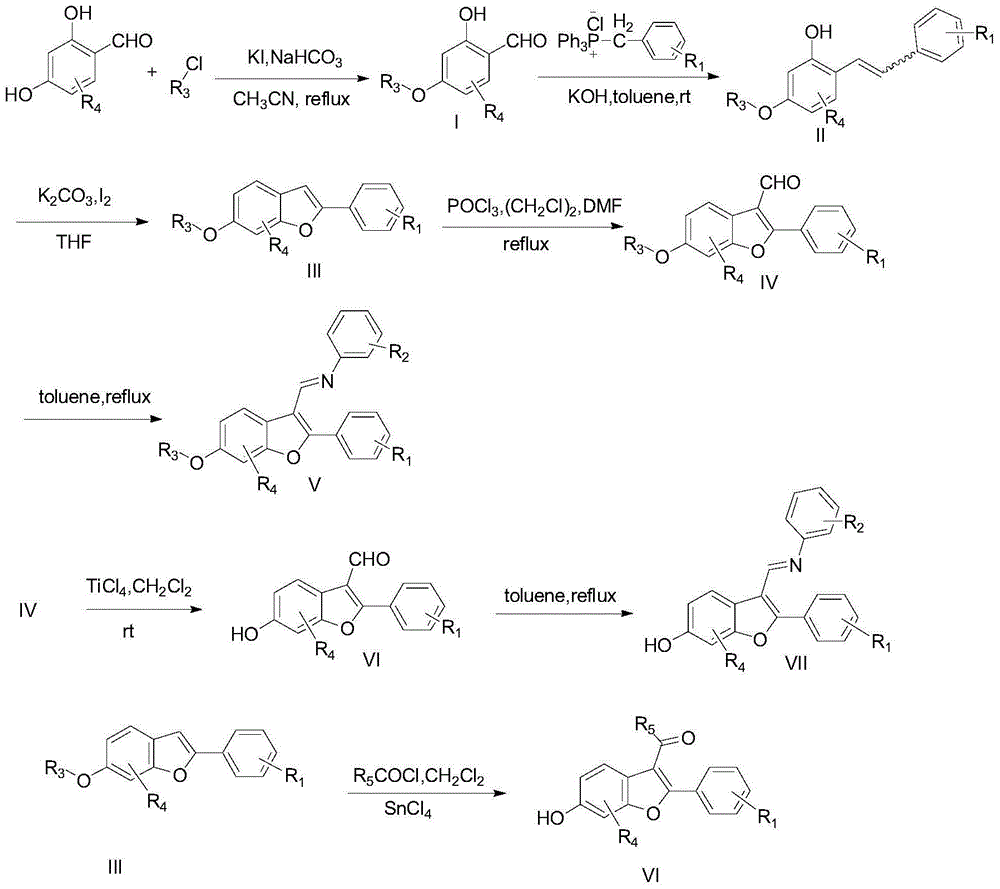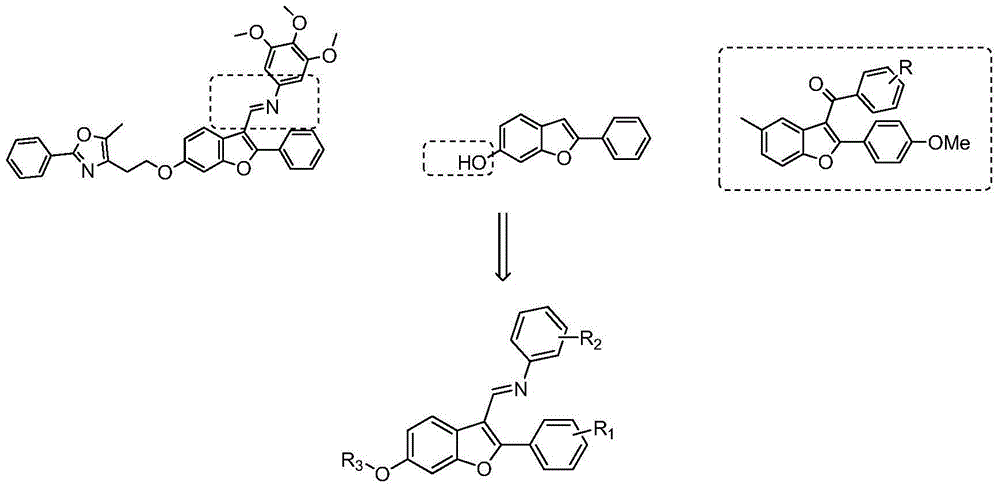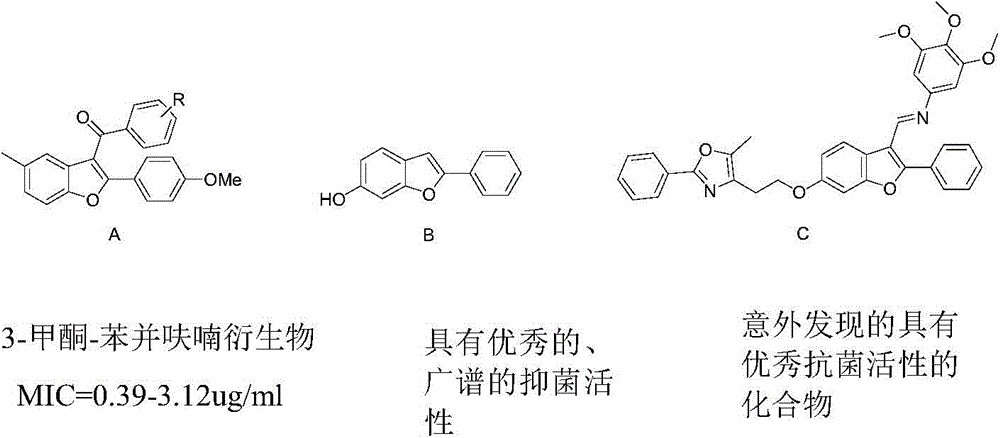Benzofuran compounds and their preparation and use
A technology of benzofuran and compound, applied in the field of benzofuran compound and preparation thereof, can solve problems such as toxic and side effects
- Summary
- Abstract
- Description
- Claims
- Application Information
AI Technical Summary
Problems solved by technology
Method used
Image
Examples
Embodiment 1
[0055] Synthesis of 4-(benzyloxy)-2-hydroxybenzaldehyde I ( figure 1 ): 2,4-dihydroxybenzaldehyde (5.00g, 36mmol) was dissolved in acetonitrile (500mL), then potassium iodide (9.00g, 54mmol) and sodium bicarbonate (4.50g, 54mmol) were added, after adding, slowly Benzyl chloride (5.50 g, 43.5 mmol) was added dropwise and refluxed for 12 h. After the reaction was completed, it was quenched with water, extracted with ethyl acetate, the organic phases were combined, washed three times with saturated brine, dried over anhydrous sodium sulfate, concentrated under reduced pressure, purified by silica gel column chromatography (petroleum ether: ethyl acetate = 10 : 1) 5.25 g of 4-(benzyloxy)-2-hydroxybenzaldehyde was obtained (white solid, yield 64%).
[0056] 1 H NMR (CDCl 3 ;300MHz), δ5.11(s, 2H, OCH 2 Ph)6.51-6.52(d, 1H, ArH), 6.60-6.63(dd, 1H, ArH), 7.36-7.46(m, 6H, ArH), 9.72(s, 1H, OH), 11.48(s, 1H, OH).
Embodiment 2
[0058] Synthesis of triphenylbenzylphosphine chloride: Benzyl chloride (2.88g, 31.6mmol) and triphenylphosphine (8.57g, 32.7mmo) were dissolved in 20mL of acetonitrile and heated to reflux overnight. After the reaction was completed, it was cooled to room temperature and filtered to obtain 7.5 g of triphenylbenzylphosphine chloride (white solid, yield 61%).
[0059] 1 H NMR (DMSO; 300MHz), δ5.25-5.30(d, 2H, J=15.9Hz, CH 2 P), 6.98-7.01 (m, 2H, ArH), 7.19-7.29 (m, 3H, ArH), 7.65-7.77 (m, 12H, Ph), 7.87-7.93 (m, 3H, Ph).
Embodiment 3
[0061] Synthesis of 4-benzyloxybenzyl alcohol: 4-hydroxybenzyl alcohol (10.00g, 80.55mmol) was dissolved in 150mL of acetonitrile, then potassium carbonate (22.27g, 161.1mmol) was added, and benzyl chloride (12.24 g, 96.66mmol), reflux 12h. After the reaction was completed, quenched with water, extracted with ethyl acetate, combined organic phases, washed with saturated brine, dried over anhydrous sodium sulfate, concentrated under reduced pressure, purified by silica gel column chromatography (petroleum ether: ethyl acetate = 3:1 ) to obtain 15 g of 4-benzyloxybenzyl alcohol (white solid, yield 87%).
[0062] 1 H NMR (DMSO; 300MHz), δ4.39-4.41 (d, 2H, CH 2 OH), 5.00-5.04(t, 1H, CH 2 OH), 5.06(s, 2H, OCH 2 Ph), 6.94-6.97 (d, 2H, ArH), 7.20-7.23 (d, 2H, ArH), 7.31-7.45 (m, 5H, ArH).
PUM
 Login to View More
Login to View More Abstract
Description
Claims
Application Information
 Login to View More
Login to View More - R&D
- Intellectual Property
- Life Sciences
- Materials
- Tech Scout
- Unparalleled Data Quality
- Higher Quality Content
- 60% Fewer Hallucinations
Browse by: Latest US Patents, China's latest patents, Technical Efficacy Thesaurus, Application Domain, Technology Topic, Popular Technical Reports.
© 2025 PatSnap. All rights reserved.Legal|Privacy policy|Modern Slavery Act Transparency Statement|Sitemap|About US| Contact US: help@patsnap.com



